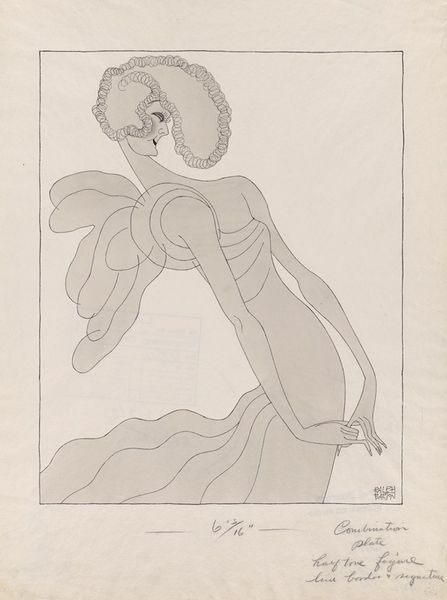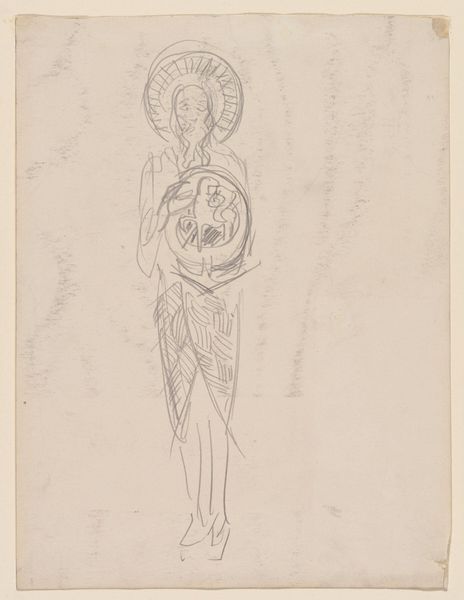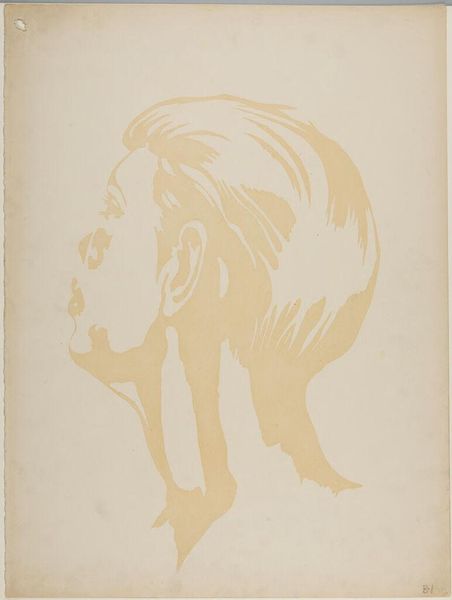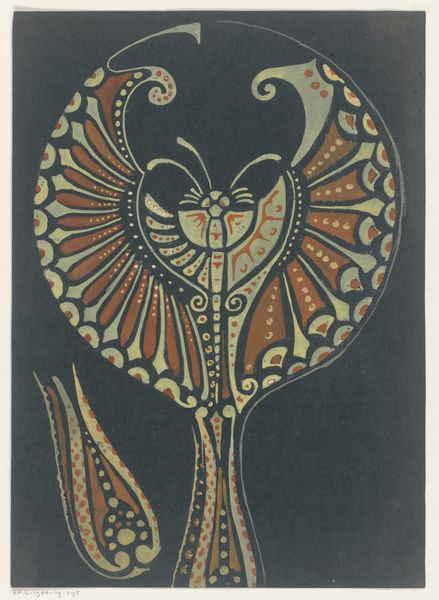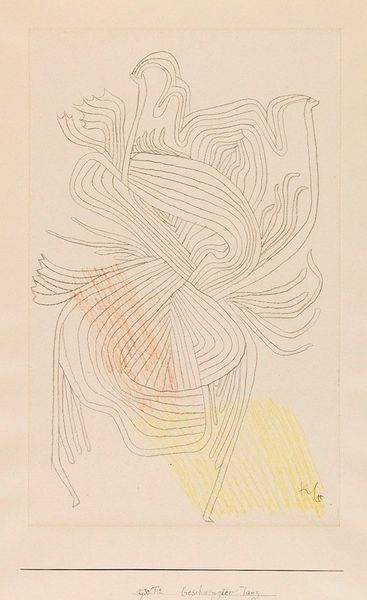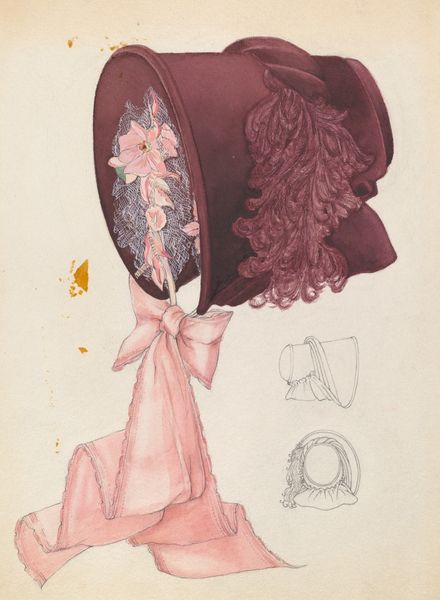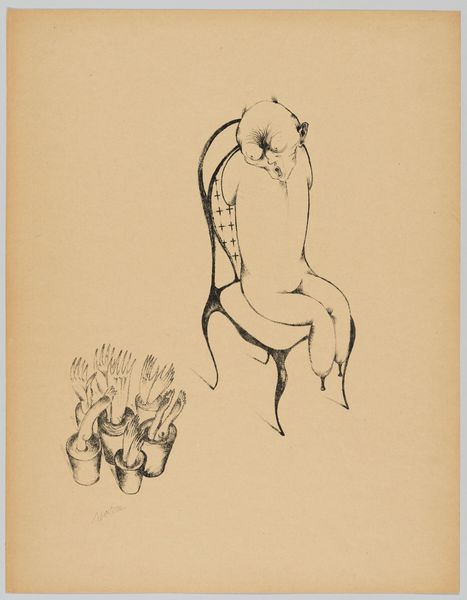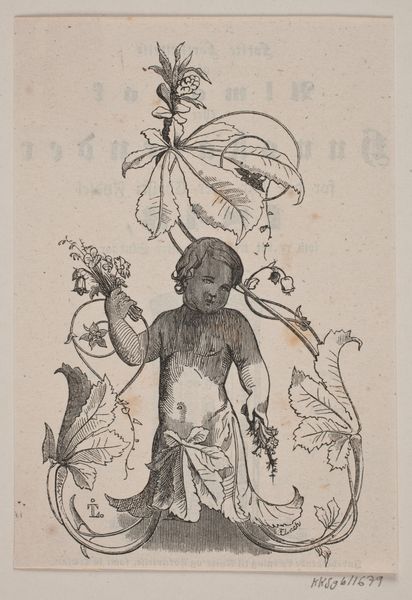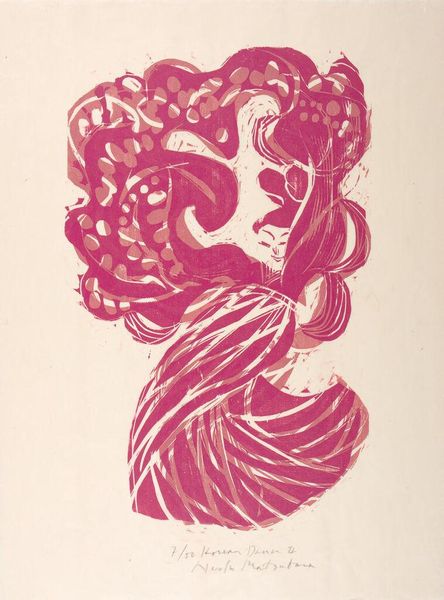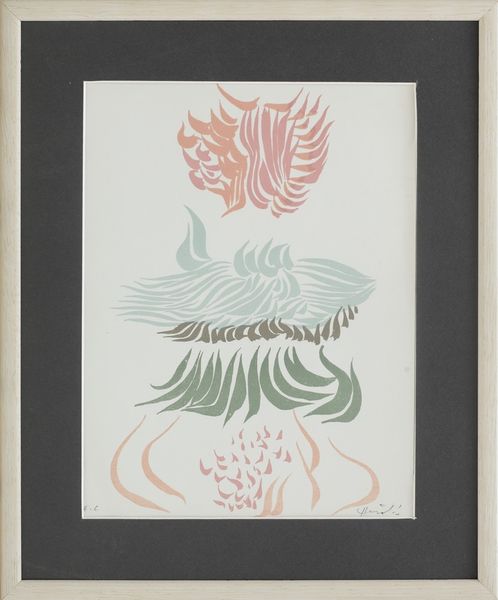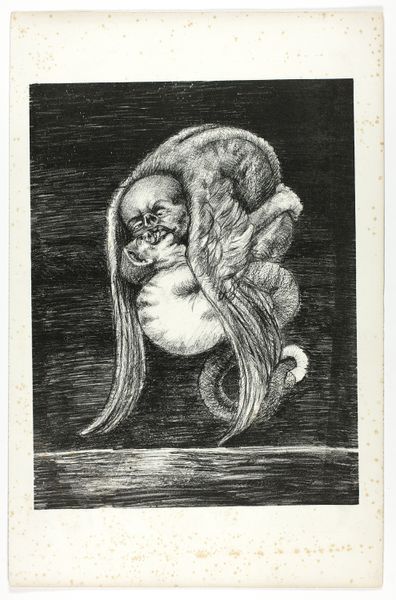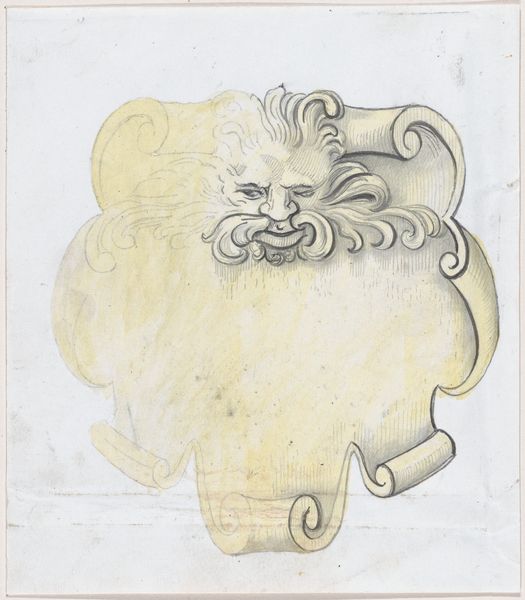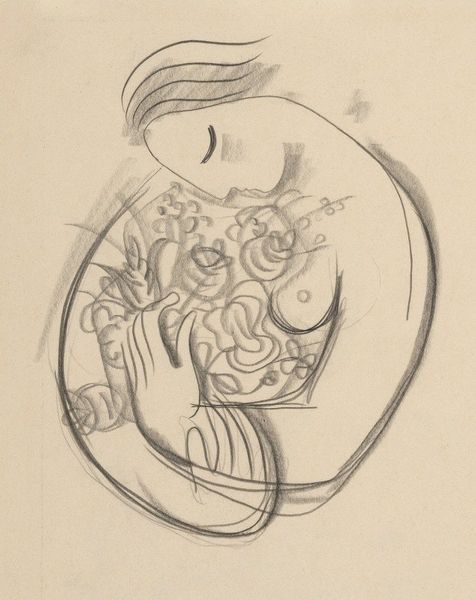
drawing, paper, ink
#
portrait
#
drawing
#
figuration
#
paper
#
ink
Copyright: Louise Bourgeois,Fair Use
Curator: What a striking image. We are looking at Louise Bourgeois's "The Cross-Eyed Woman," a drawing from 2004 rendered in ink on paper. It presents an intriguing portrait. Editor: Intriguing is one word. Unsettling comes to mind immediately. The red ink on the stark white paper creates an almost… visceral reaction. And that gaze – intense, confrontational. Curator: Indeed. The redness itself is potent. Red frequently signifies passion, vitality, even anger. Notice how Bourgeois utilizes this shade not for conventional beauty but to provoke a more complex emotional landscape. The spirals where the ears should be, suggest distorted perception. Editor: Distortion seems to be the key. I am wondering about Bourgeois's state of mind when creating this. What were the politics of representation for her? This deviates so far from the idealization of the female form. Curator: It's crucial to remember the social context surrounding Bourgeois's late work. In the early 2000s, conversations about the female gaze and the subversion of traditional portraiture were gaining prominence. "The Cross-Eyed Woman," in that sense, reflects a powerful shift. Consider its raw emotionality as a reaction against societal expectations imposed on women. The face is isolated, an aggressive statement. Editor: Yes, isolated but framed – or rather, trapped – within that oval shape. Almost like an anatomical study but rendered with this deeply psychological edge. Also, the title itself forces the viewer to fixate on the perceived flaw. Curator: Exactly! Consider the implications of cross-eyedness. Often stigmatized, medically othered. But here, it’s a focal point, an emblem. It suggests inner vision. A defiance of conventional seeing. What cultural narrative is she challenging, what unspoken pain is embodied there? Editor: Perhaps that the gaze extends inward, interrogating the self. It asks how do we represent vulnerability, ageing, imperfection. I wonder how did the critics respond when it was exhibited. Did they address its political stance? Curator: Critical reactions often noted the continuing themes of trauma, memory, and the female body present throughout her oeuvre. We can understand the dialogue with her earlier sculptures and installations. The artwork, now displayed in our gallery, acts as a testament to Bourgeois's enduring commitment. Editor: Thank you. Viewing this piece through the lens of feminist history certainly changes how I understand it. It is, indeed, not just a portrait, but a profound statement. Curator: Precisely. There is so much to absorb within her distorted beauty, so many echoes reverberating.
Comments
No comments
Be the first to comment and join the conversation on the ultimate creative platform.
